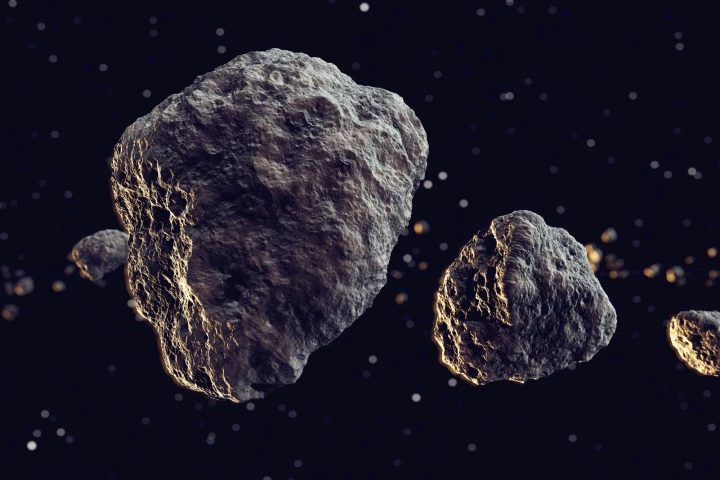Asteroid Redirect Mission
-
Asteroid 2024 YR4 has grabbed headlines lately, after NASA briefly gave it had the highest ever chance of an impact for an asteroid of hazardous size. Thankfully, new observations have dropped that probability to almost zero – for Earth, anyway.
-
ESA's Hera spacecraft designed to assess NASA's experiment to deflect an asteroid has launched from Cape Canaveral Space Force Station, Florida. At 14:52 GMT, the robotic probe lifted off atop a Falcon 9 rocket to begin its three-year mission.
-
Asteroids can devastate the planet in an instant – just ask the dinosaurs. Scientists at Sandia National Laboratories have now demonstrated a proof of concept method to deflect a potential Earthbound asteroid using a blast of X-rays.
-
China is looking to get into the planetary defense business. A new paper by the China National Space Administration (CNSA) confirms that in 2030, the country plans to conduct a test mission to deflect a small asteroid from its current course.
-
In 2029, a large asteroid will whizz past Earth so close it’ll be visible to the naked eye. But could collisions with other asteroids bounce it off-course into us? To find out, astronomers have now crunched the paths of 1.3 million known asteroids.
-
When NASA's DART deep space probe smashed into the asteroid Dimorphos, it didn't leave a crater. Instead, there was a splash, where the asteroid was distorted like a jelly as its entire structure shifted.
-
In September, NASA deliberately crashed a spacecraft into an asteroid to test a potential planetary defense technique. To mark the publication of four scientific papers, NASA has released a video of the impact captured by the Hubble Space Telescope.
-
Radio waves from Alaska have been transmitted to an asteroid passing just two lunar distances away from the Earth. The information gathered could arm scientists with information that may be critical in defending the planet from a collision some day.
-
The collision between NASA’s DART spacecraft and the asteroid Dimorphos was always going to be a spectacle. By analyzing data from telescopes and tiny satellites nearby, scientists are now piecing together some fascinating details around the event.
-
Astronomers have been keenly watching the asteroid Didymos since the historic DART mission successfully crashed a spacecraft into it last month. And now, Hubble has detected something unexpected – the asteroid has sprouted two tails.
-
Last month, NASA purposely crashed a spacecraft into an asteroid in an attempt to knock it off course, and the results are now in, with scientists confirming the orbit of Dimorphos around its parent asteroid was shortened by 32 minutes.
-
Last week, NASA crashed a spacecraft into an asteroid, and now images have been released of the collision and aftermath from a suite of telescopes – including Hubble and James Webb in their first collaboration. One even shows a new 10,000-km tail.
Load More











